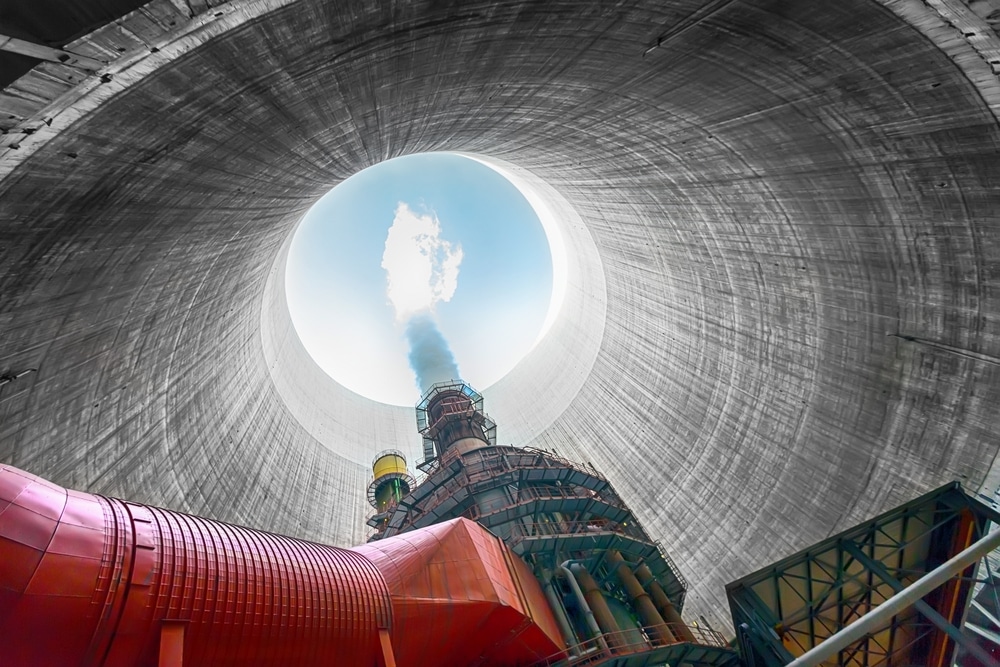Why waste energy by converting it into electricity and then back into heat again?

Thermal energy storage (TES) systems work by storing thermal energy in a material, such as water, concrete, or phase change materials, during periods of low demand and releasing it when needed during periods of high demand. There are three main types of TES systems:
- Sensible Heat Storage: Sensible heat storage systems store thermal energy by heating or cooling a material, such as water, which can then be used for heating or cooling purposes. These systems rely on the specific heat capacity of the material to store energy, which is the amount of heat required to raise the temperature of a unit mass of the material by one degree Celsius.
- Latent Heat Storage: Latent heat storage systems store thermal energy by using a material that undergoes a phase change, such as melting or solidifying, to store and release energy. During the phase change, the material absorbs or releases a large amount of energy without changing temperature. Phase change materials (PCMs) are often used for latent heat storage because they can store a large amount of energy in a small volume.
- Thermochemical Heat Storage: Thermochemical heat storage systems use a reversible chemical reaction to store and release thermal energy. The system involves heating a reactant to a high temperature, which causes it to undergo a chemical reaction and store energy. When the energy is needed, the reactant is cooled, causing it to release the stored energy.
In all three types of TES systems, the stored energy can be used to provide heating or cooling when needed, such as for space heating and cooling, hot water production, or industrial processes. TES systems can improve energy efficiency, reduce energy costs, and increase reliability by allowing excess energy to be stored and used when needed.
Why is this important?
Where is expensive electricity used for heating or cooling? This is where it would benefit the most.
There are several industries that use thermal energy storage (TES) systems for a variety of reasons, including improving efficiency, reducing costs, and increasing reliability. Some examples include:
- HVAC: Heating, ventilation, and air conditioning (HVAC) systems use TES to store thermal energy during off-peak hours and release it during peak demand. This helps to reduce energy costs and increase system efficiency.
- Power Generation: Thermal energy storage can be used in power generation plants to store excess energy during low-demand periods and release it during high-demand periods. This can help to reduce the need for expensive peak-demand energy sources.
- Food and Beverage: The food and beverage industry uses TES systems to store thermal energy for refrigeration and cooling applications. This can help to reduce energy costs and increase efficiency in food storage and processing.
- Solar Energy: Solar energy systems can benefit from TES, which allows excess energy to be stored during peak sun hours and used later during periods of low sunlight. This can help to increase the overall efficiency and reliability of solar energy systems.
- Industrial Processes: Many industrial processes require high-temperature heat, which can be provided by TES systems. These systems can store excess heat during off-peak hours and release it when needed, reducing energy costs and increasing efficiency.
Overall, thermal energy storage systems offer a flexible and reliable way to store and use thermal energy, providing benefits to a wide range of industries.
When you combine Thermal Energy Storage with Battery Energy Storage, you only store the electric energy you need in more expensive and less efficient batteries and store the rest as heat.
Thermal storage systems and battery energy storage systems each have unique benefits and applications. Combining them can offer even greater benefits, including:
- Increased Efficiency: One of the primary benefits of combining thermal and battery storage is that it can increase overall system efficiency. By using excess energy from a renewable source (such as solar or wind) to heat or cool a thermal storage system, this energy can be stored and used later when needed. This reduces the amount of energy that needs to be stored in batteries, which can be less efficient.
. - Increased Flexibility: Combining thermal and battery storage can also provide greater flexibility in how energy is stored and used. For example, if energy demand is higher than supply, the battery storage system can be used to provide immediate power. However, if demand is lower than supply, excess energy can be used to charge the thermal storage system. This allows for more efficient use of both systems and greater flexibility in meeting energy demand.
. - Improved Resilience: Combining thermal and battery storage can also improve the resilience of the energy system. In the event of a power outage or other disruption, thermal storage can provide backup heating or cooling, while battery storage can provide backup power. This can help ensure continuity of critical services and reduce the impact of disruptions on homes, businesses, and communities.
. - Cost Savings: Finally, combining thermal and battery storage can offer cost savings over time. By reducing the need for larger battery storage systems, this approach can help lower the overall cost of energy storage. Additionally, the ability to store excess energy and use it later can reduce the need to purchase energy from the grid during times of high demand, which can also result in cost savings.
.
We at the Axalton Group will be happy to calculate optimal energy usage for you when heating/cooling is involved in industrial processes.
